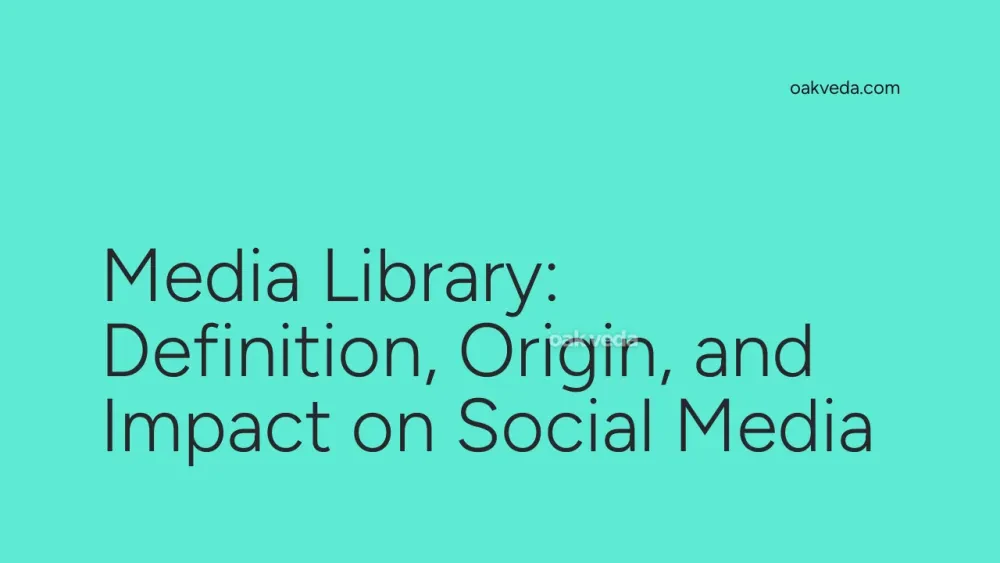
What is a Media Library?
A media library is a digital storage and organization system used in social media management tools to store, categorize, and access visual content for social media posts. It serves as a centralized repository for images, videos, and other media files that users plan to share across various social media platforms. Media libraries are designed to streamline the content creation and scheduling process, making it easier for individuals and businesses to manage their social media presence efficiently.
Origin and Development of Media Libraries
The concept of media libraries in social media management tools emerged as a response to the growing need for organized content management in the digital marketing landscape. As social media platforms gained popularity and businesses recognized the importance of consistent online presence, the demand for tools to simplify content creation and scheduling increased.
Early social media management platforms offered basic scheduling features, but as the volume of visual content grew, so did the need for more sophisticated organization systems. Media libraries evolved from simple file storage to comprehensive content management solutions, incorporating features like tagging, searching, and integration with content creation tools.
How Media Libraries Work
Media libraries function as the backbone of content organization within social media management tools. Here's a breakdown of their key features and functionalities:
- Content Upload: Users can upload images, videos, and other media files directly to the library.
- Organization: Files can be categorized using folders, tags, or custom labels for easy retrieval.
- Search Functionality: Advanced search options allow users to quickly find specific content based on various criteria.
- Integration: Media libraries are typically integrated with post scheduling and content creation features within the platform.
- Cloud Storage: Most media libraries use cloud storage, ensuring accessibility across devices and team members.
- Version Control: Some advanced media libraries offer version control, allowing users to track changes and revert to previous versions if needed.
Popular Examples of Media Libraries
Several social media management tools offer robust media library features. Some popular examples include:
- Later: Known for its user-friendly interface and strong focus on visual content planning.
- Hootsuite: Offers a comprehensive media library as part of its broader social media management suite.
- Sprout Social: Provides a content library with advanced organization and collaboration features.
- Buffer: Includes a media library with a focus on simplicity and ease of use.
Impact of Media Libraries on Social Media Culture
Media libraries have significantly influenced social media culture and content creation practices:
- Consistency in Branding: By centralizing media assets, brands can maintain visual consistency across platforms.
- Efficiency in Content Creation: Easy access to organized content allows for quicker post creation and scheduling.
- Collaboration: Team members can easily share and access approved content, improving workflow.
- Content Repurposing: Media libraries facilitate the reuse and repurposing of content across different campaigns and platforms.
- Data-Driven Decision Making: Some media libraries offer insights into content performance, helping users optimize their strategies.
How Brands and Influencers Use Media Libraries
Brands and influencers leverage media libraries to enhance their social media strategies:
- Content Planning: Media libraries allow for visual content calendars, helping plan cohesive feeds and stories.
- Asset Management: Brands can store and organize product images, promotional materials, and user-generated content in one place.
- Seasonal Campaigns: Easily access and schedule content for recurring events or seasonal promotions.
- Influencer Collaborations: Share approved brand assets with influencers to maintain brand consistency in partnerships.
- Cross-Platform Posting: Adapt and resize content for different social media platforms efficiently.
Future Trends Related to Media Libraries
As social media continues to evolve, media libraries are likely to see several advancements:
- AI-Powered Organization: Artificial intelligence may be used to automatically tag and categorize uploaded content.
- Enhanced Integration: Deeper integration with design tools and stock photo services for seamless content creation.
- Advanced Analytics: More sophisticated performance tracking and content recommendations based on historical data.
- Video Editing Capabilities: In-built video editing features to quickly adapt video content for different platforms.
- Augmented Reality Integration: As AR becomes more prevalent in social media, media libraries may incorporate AR asset management.
FAQs about Media Libraries
-
Are media libraries only for businesses? No, media libraries are useful for anyone managing social media content, including individuals, influencers, and small businesses.
-
Can I access my media library from multiple devices? Most media libraries are cloud-based, allowing access from various devices with proper login credentials.
-
How much storage do media libraries typically offer? Storage capacity varies by platform and subscription level, ranging from a few gigabytes to unlimited storage.
-
Can I share my media library with team members? Many platforms offer collaboration features, allowing you to share your media library with team members or clients.
-
Do media libraries support all file types? While most support common image and video formats, specific file type support may vary by platform.
Media libraries have become an indispensable tool in the social media manager's arsenal, streamlining content organization and enhancing the efficiency of social media strategies. As visual content continues to dominate social platforms, the role of media libraries in shaping effective social media management is likely to grow even further.
You may be interested in:
- Girl Math: Definition, Origin, and Impact on Social Media
- BeReal: Definition, Origin, and Impact on Social Media
- Boyfriend Effect: Definition, Origin, and Impact on TikTok
- FR (For Real): Definition, Origin, and Impact on Social Media
- Finna: Definition, Origin, and Impact on Social Media
- Social Selling: Definition, Origin, and Impact

